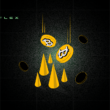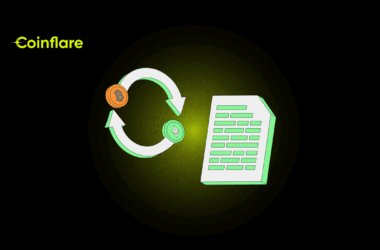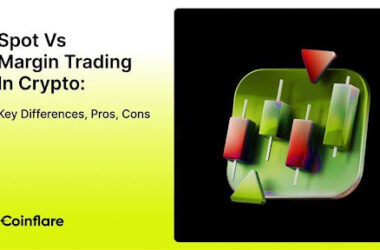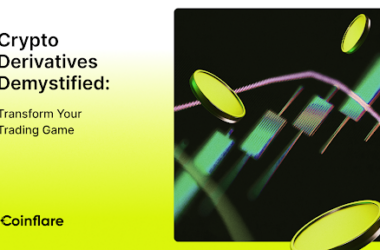Catalogue - Key Takeaways Show

The buzzing realm of cryptocurrencies is witnessing a sharp rise in token standards. Bitcoin and Ethereum are reigning the market with their respective standards, the BRC-20 and ERC-20 tokens are the new talk of the town. Among millions of tokens that exist BRC 20 and ERC 20 tokens are now seen as prominent players. Each has its own unique purpose in its respective blockchain networks. This article will discuss the details about how BRC-20 and ERC 20 tokens work and will shed light on its functionalities, architecture, and their ecosystem.
Decoding ERC-20 Tokens
Ethereum is the pioneering blockchain technology and smart contracts platform and introduced its ERC-20 (Ethereum Request for Comment 20) standard for facilitating the creation and management of tokens on its blockchain. ERC 20 tokens stick to the set of rules and specifications and enable developers to issue tokens that are suitable with the Ethereum and its ecosystem. These kinds of tokens are the backbone of countless decentralized applications (DApps) & Initial Coin Offerings (ICOs).
ERC 20 tokens all share a common characteristic that includes transferability, fungibility and divisibility. Also, they follow six mandatory set of functions which are as follows:
- Total Supply
- Balance Of transfer
- Transfer Form
- Approve
- Allowance
All the above functions provide a standardized way for the tokens to be created, managed and transferred the tokens within the Ethereum blockchain.
The notable ERC 20 token are some famous cryptocurrencies such as ChainLink (LINK), USD Coin (USDC), and Uniswap (UNI). Their widespread adoption and uses have underscored the success of the ERC 20 standard in bolstering interoperability, with ease of use within the Ethereum ecosystem.
BRC 20 Tokens (A Binance Smart Chain Variant)
In response to the increasing demands for some scalability challenges and how to cope with them, there are some cost-effective solutions available. Binance has now launched its own token standard known as BRC-20. BRC-20 tokens operate with the Binance Smart Chain networks, and therefore share similarities with the ERC-20 tokens further making it compatible with the Ethereum Virtual Machine (EVM). This process of cross compatibility allows developers to seamlessly port their projects between Ethereum blockchain and Binance Smart Chain.
Also, BRC 20 token creation has the same characteristics as that of ERC 20 counterparts like fungibility, transferability, and divisibility. But Binance Smart Chain employs a different architecture and a distinct consensus mechanism. Binance Smart Chain utilizes a Proof of Staked Authority (PoSA) as a consensus algorithm that combines elements of Proof-of-stake (PoS) and Practical Byzantine Fault Tolerance (PBFT). This enables faster transaction processing and lower fees as compared to Ethereum’s Proof-of-Work (PoW) consensus mechanism.
Understanding Smart Contracts: Heart of Token Creation and Functionality
A primary difference between BRC 20 vs ERC 20 tokens lies in the implementation of smart contracts. Smart contracts are the self-executing contracts with agreement and its terms directly written in the code. In token standards context, smart contracts basically instruct the rules that are governing token creation, transactions and distribution.
As ERC 20 tokens are created on Ethereum blockchain, that has forever been praised due to its robust and secure smart contract functionality. Ethereum’s Turing complete programming language allows developers to create some complex and versatile smart contracts. This contributes to the widespread adoption of ERC 20 tokens in multiple decentralized applications (DApps).
Contrary to ERC 20 tokens, BRC 20 tokens leverage smart contract capabilities of Binance Smart Chain. However, the feature rich element is missing from the BSC if we compare it to the Ethereum blockchain. Ethereum’s Binance Smart Chain’s compatibility with Ethereum Virtual Machine (EVM) allows developers to easily migrate the projects and provides a flexible environment for token creation and its management.
Transaction Speed and Gas Fees
Transaction speed and fees are some critical factors in evaluation and efficiency of the blockchain networks. Ethereum has faced some challenges with scalability resulting in congestion and high gas fees during periods of heightened activity. Binance Smart Chain therefore addresses these concerns by using a separate consensus mechanism and prioritizing speed and affordability.
BRC 20 tokens therefore benefit from Binance Smart Chain and its faster block generation time with lower transaction costs. This proof of stake authority algorithm enables quick confirmation of transactions. This makes BRC 20 tokens an appealing choice for projects that prioritize efficiency as well as cost effectiveness.
On the other side of the spectrum, ERC 20 tokens may face delays and slightly higher fees especially during congestion on the Ethereum blockchain. This has led to some developers as well as users exploring the alternative blockchain solutions. This makes Binance Smart Chain emerge as a viable option for those who are seeking faster and more cost-effective transactions.
Decentralization and Ecosystem
A choice between BRC 20 and ERC 20 tokens often depends strongly on the specific needs and preferences of developers and users. Ethereum has now established itself as a hub for decentralized finance (DeFi) projects, non fungible tokens (NFTs) and many other applications. Its large and diverse ecosystem provides an ample opportunity for collaboration and innovation.
BinanceSmartChain is new in comparison, and has rapidly gained much traction, especially in the realm of decentralized finance. BSCs focusing on high-speed, low-cost transactions has attracted projects looking to amplify all these advantages. Binance ecosystem, with its diverse user-friendly interfaces and integration with Binance exchange has also contributed to the overall popularity of BRC 20 tokens.
When it comes to terms of decentralization, Ethereum’s PoW consensus mechanism is often lauded for its robust security and resilience. Binance Smart Chain’s PoSA whereas it offers benefits in terms of efficiency, may raise concerns related to potential centralization risks. However, both the ecosystems, as continue to reshape and evolve the balance to maintain the decentralization and scalability is a crucial consideration.
FAQs
What is a BRC 20?
BRC 20 is an experimental token standard for fungible tokens on Bitcoin blockchain, that uses inscription instead of smart contracts.
When did BRC 20 start?
BRC 20 tokens came to the forefront in March 2023, bringing with them a fungible token standard to the Bitcoin blockchain ecosystem.
What is ERC 20?
ERC 20 defines the common rules for Ethereum network tokens, that enables smart contracts and diverse blockchain applications.
When did ERC 20 start?
ERC 20 started back in November 2015, and has since then shaped the Ethereum token landscape till now.
Which one is better: BRC 20 or ERC 20?
Choosing better depends upon multiple factors such as ERC 20 offers flexibility and a mature ecosystem, whereas bringing BRC 20 has innovation attached to Bitcoin but has limited features at the moment.
Final Thoughts
As BRC 20 vs ERC 20 token standards remain a contrasting debate, and which one suits and fits well depends on various factors such as transaction speed, fees, smart contracts, with preferences in the ecosystem. Ethereum’s ERC 20 tokens have always been widely adopted and preferred with decentralization and innovation at the forefront, fostering innovation and decentralized applications as well as tokenization. But with the emergence of Binance Smart Chain and its BRC 20 tokens, a compelling alternative is available now. This provides developers options to exercise and prioritize cost effectiveness and efficiency.
About Coinflare
Coinflare is a cryptocurrency exchange platform that offers traders a secure, easy-to-use, and convenient way to buy, sell and trade cryptocurrencies. Our platform has been designed with investors of all levels in mind, whether they are just starting out or experienced traders. We offer various features and tools to help users make the best trading decisions possible, including advanced charting and analytics, real-time market data, and various customisable trading interfaces. At Coinflare, we are dedicated to empowering our users and helping them reach their financial goals.
Stay in the loop about our launches, trading pair announcements, contests and more by following us on Discord, Telegram, and Twitter.









